4 Feb 2013
Exploring the potential symbiosis of Transition groups and AECB groups
Today we have a guest post from Kate de Selincourt of the AECB, the Sustainable Building Association:
Are you keen on encouraging sustainable and resilient building in your community – and would you like to have some good chats about it? If you have an AECB group nearby you have an untapped resource. Transition members who are involved with building and energy initiatives are being invited to come along to a local meeting of the AECB (Sustainable Building Association) and take advantage of the common ground between the two organisations.
You may already know some local AECB members, as many ‘ecohomers’ are members – and where Transition and AECB groups have linked up, the natural overlap means they are able to join forces with projects and initiatives including Eco Open House/Open Doors – and other joint events too, to great mutual benefit. At the end of the article you’ll find a couple of links showing you how you can find out what’s happening near you.
Who will you find in the AECB? The AECB was established in the 80s by of pioneers of green building, and is still very much a pioneering organisation, now with a wealth of experience – between them they’ve tried most things. Members are individuals and small and large organisations (for example, architects and designers, manufacturers, builders, energy consultants, academics, campaigners). All are interested in the kind of building that creates a good environment for the occupants while being as gentle as possible on the planet.
Among the members of the AECB are some of the nation’s pioneers – and foremost authorities — in sustainable building, energy efficiency, renewable energy, high performance and sustainable materials, components and technologies. Sounds geeky? Don’t worry! They are also as friendly, open-minded and convivial a bunch of geeks as anyone could hope to meet.
Working with AECB local groups on eco-open homes is an obvious place to start. Local AECB members often have fascinating premises of their own, and/or may be willing to act as guide in houses they were involved in, answering questions to the visitors. At the same time they are gaining invaluable feedback on what potential customers are looking for!
Transition West Bridgford, (next to Nottingham), has seen a really fruitful relationship develop with their local AECB, starting with eco-open homes and going on to develop jointly-organised member and public events.
Architect Gil Schalom, who organises the local AECB in Nottingham , says “We find that having people from both groups together makes the events more special – and you end up with more people coming from both groups.
“It allows Transition members access to a knowledge base. There have been some fantastic joint events such as a meet the experts session where lots of people came along and got really practical advice on issues like attic rooms, ventilation, external insulation.”
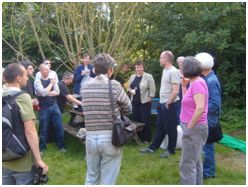
AECB members in Gloucestershire get together to look at the ‘nuts and bolts’ of external wall insulation
AECB has local groups in England, Scotland and Wales; New groups are forming all the time – the next one will hopefully be in Devon. The groups run events where members get together to learn, chat, and network. Many involve visits to interesting green buildings, often in the construction phase – you might see cork insulation or lime render being applied, find out how to build an insulated floor, or visit a refurbishment focusing on reclaimed materials.
Opening up buildings while the work is under way “really gives people a chance to look at the nuts and bolts” as Gil Schalom says.
One AECB local event last year (in Kent) was a bike ride visiting a new low energy church, a spiral-shaped straw bale house on a smallholding (see picture at the top of this piece), and a home built from an arch of tiles (that had featured on Grand Designs).
You get to hear about the reality – one 2012 visit was billed as “a tale of love and disaster” – the warts and all story of an experimental four-storey timber framed building with Hemcrete (made from hemp and lime) in place of concrete.
The Kent group are particularly active – literally; another session at a local nature reserve included a go on the 3-stories high drop slide — along with talks about water use, sustainable drainage and flooding, water treatment in constructed wetlands — and a talk from the beaver keeper.
AECB members don’t take much on trust, so they do a lot of research and monitoring. For example, the graphic shown below is built up from a full year of records made at a house – visited by its local AECB group – which had been transformed to slash energy demand. Visitors could therefore ask detailed questions about the refurbished house performed, come rain or shine.
Like Transition, AECB members will often be first to spot a problem, and begin to work on the solution before most people have noticed there is an issue. As one member put it at last year’s AECB conference: “AECB is about lack of bullshit. It questions the mainstream. It’s the place to ask the questions that nobody else is thinking about.”
No green icon is safe from scrutiny – members question solar panels, biomass heating, zero carbon targets, rainwater harvesting, green roofs – and argue enthusiastically about the relative merits of mechanical and natural ventilation, about how much internal insulation is safe and what should it be made of… nothing is sacred (except perhaps, evidence!)
What unites members is a commitment to deliver buildings that are as healthy for occupants as they are for the planet, and if the status quo isn’t good enough, they’ll tackle it. For example, member Mark Siddall is one of those determined to see better air quality and ventilation: “The regulations are useless, and danger is lurking; we must get it cracked, and help to set standards for health and wellbeing,” he says – and to that end he organises events, give talks, and writes articles to enable people to debate and share.
Not all AECB get-togethers involve visits; many are congenial evenings at cafes, pubs or members’ own premises, with or without invited speakers, enabling in-depth discussion and learning.
Discussing with practitioners enables you to get past the sales talk. Be it compost toilets, natural materials, insulating traditional buildings, concepts like Passivhaus or breathable materials, AECB members can explain what they are and aren’t, and warn you of pitfalls to avoid, such as where not to use internal insulation, or why some people to love their heat pumps, while others get quadrupled energy bills. They can help you understand what works where, and what gives the most bang for your buck.
“I think people coming from Transition groups to AECB events have been amazed to discover the disparity between the level of performance of ordinary buildings (old and new) , and what is possible with the kind of diligent approach characteristic of the AECB,” Gil Schalom believes.
“It’s really opened people’s eyes and got them switched on to the real issues, and AECB members in turn can really feel the way awareness is rising and interest – and activity – is increasing in the community.”
Of course not all AECB members know everything or get everything right – but they all do want to learn. And Transition members can be part of the research and learning – perhaps by monitoring their home’s performance or being part of technical studies of tricky issues (like the risks from cold and damp in basements under insulated floors – currently being investigated by academic and member Sofie Pelsmakers – see left).
AECB has always taken an interest in wider sustainability issues such as health, community resilience, social equity – and of course energy. Last year AECB published what might be described as an energy descent plan for the nation — a detailed technical report on energy efficiency, called “Less is More”.
A recent group visit got close-up and personal with a large wind turbine (the one alongside the M4), with the chance to quiz the project owner on energy production, bird strikes (or lack of them) and the developing attitude of the local community.
It isn’t just the technology that is interesting, it is also the approach: subject of one of last year’s AECB local group meetings was a highly energy efficient straw bale building in a London park built to the highly efficient AECB Silver Standard by Straw Works, a women-run firm, who also delivered construction training to community members as part of the build.
In fact Transition and Barbara Jones of Straw Works go a long way back – Rob Hopkins was inspired by the first straw bale building course Barbara Jones ever taught – see Rob’s blog here.
“I have seen again and again the power of sheltermaking,” Rob said. “ Also of the use of materials which make the process of building accessible to everyone. I see natural building as one of the very important aspects of energy descent. How will we house ourselves when we no longer have … high energy materials such as cement and steel?”. These are all questions close to AECB’s heart too.
Self-build is important to the AECB – with both meanings of the term here, both one-off projects for clients with a special interest in sustainable building, but also, buildings where the clients have had direct involvement in constructing their own buildings.
Since the early days, members like trustee Geoff Stow have been involved with hands-on self-build, including by the celebrated Segal method (Geoff was involved with the Hedgehog community in Brighton, seen on another recent Grand Designs), and co-housing projects , past and present, too.
Transition groups of course have a great deal to offer AECB members. AECB members don’t generally go in for pat answers – most like nothing more than a good question – and Transition members tend to ask a lot of good questions (this has certainly been my experience; Transition visitors always make me think). There is definitely scope for a lot of two-way discovery.
Gil Schalom agrees: “It’s getting harder to tell the difference between AECB members and transition members – and in fact now a lot of people are members of both – it’s kind of a positive blur!” His partner and Transition organiser, Penney Poyzer adds “It’s about widening and deepening of the knowledge and awareness.”
AECB members’ wider concerns – as highlighted in a free-ranging debate at their annual conference last year — encompass many issues in common with Transition, including the very structure of society which has led us to our current perilous straits, which of course Transition has plenty to say about. Transition members would probably feel at home talking to a member like Andy Hamilton, who pointed to the radical challenge we face: “We are effectively bankrupt…While Korea invested their fiscal stimulus into renewables, which means they have a future, we invested in cars; we just don’t understand our situation. Can governments deal with this crisis? – I don’t think they can.”
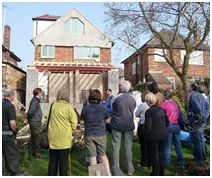
Common ground: AECB and Transition members working together made a success of eco-homes open days in and around Nottingham.
AECB member Eric Parks at the same event called on fellow members to work for local resilience by sharing what really works. “We need the community to be robust when the proverbial hits the fan.”
At the end of that event, CEO Andy Simmonds concluded: “Maybe this is the end of economic growth. We do need resilient communities. We need intellectual skills and craftsmanship, access to land and capital – and we need to understand our buildings.” All goals a Transition member would probably understand.
Find out more: Contact Debbie @ aecb.net to ask about AECB local groups near you
Check out the AECB website to find out what is happening near you, or read about some of the past events look for ‘Local Groups’ or ‘Community’. Photos (top to bottom): Paul Mallion, Nick Grant (x2), Ben Adam-Smith, SEArch Architects, SimmondsMills, A Caminada, Tina Holt
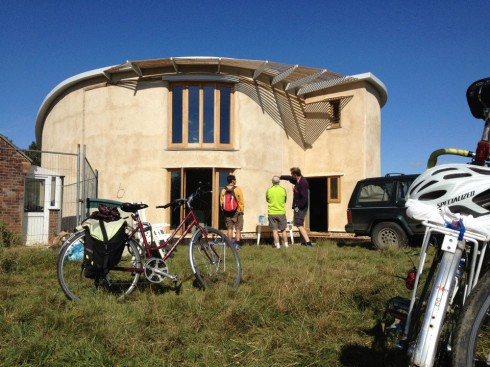
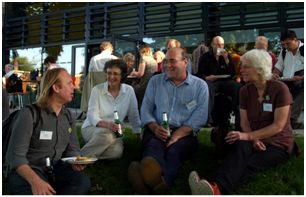
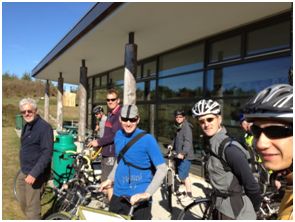
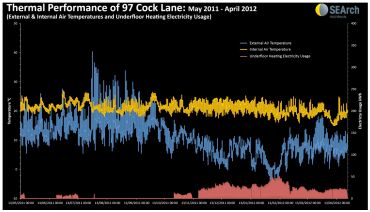
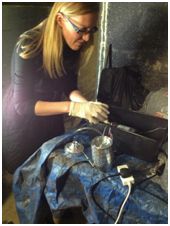
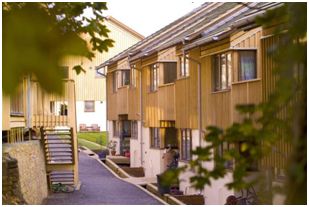
Alan
4 Feb 8:27am
link broken.
Rob Hopkins
4 Feb 8:32am
Thanks Alan, well spotted. Link sorted!
Helen
4 Feb 3:10pm
Hi Rob, Very interesting article,though obviously from the UK. Does Canada have a similar organization? Also wondering if Transition Canada has any towns wit co-op housing or their own properties to rent. I am considering a move to T Guelph but housing prices in that city are out of my range. Thanks for any info.
Marian van der Veen
8 Feb 7:57am
Hello and thanks for this suggestion!That kind of symbiosis can be very rewarding, I think.
I am an enthousiastic builder of bridges, so far only figuratively speaking :)Sustainable ways of living will be mainstream in the future, I think. The time has come for action and to walk our talk, I think. Whistleblowing has fullfilled its role sufficiently now, although more people will start their inner revolution by just doing that, as a natural reaction to revealing their truth.
Last year I have traveled through 5 communities in the UK and Wales,to experience that, here named, symbiosis, when apparent.Working on building and gardening projects, as a volunteer, offered an opportunity to be part of it, hands on, working in a team and in lots of rain.
The biggest challenge for those pioneers, as I witnessed, is to find the balance between self-righteousness, caused by rebellion, and the freedom to share skills and knowledge, even create new ways of bonding that way, by discerning the difference between a survival mode and being present in trust, seeing that we are mirrors to each other.If you’re interested in my journals of that 5 months trip in the UK, including my vision and share of Earth knowledge, please visit my website.Good luck!
Debbie Mauger
21 Feb 10:06am
As Coordinator for the AECB Sustainable Building Association Local Groups, I am pleased to have received several contacts from Transition Towns people wishing to come along to our meetings.
Our events always include the opportunity for discussions and sharing of experiences, so we look forward to welcoming anyone interested in all aspects of sustainable building.
Marian van der Veen
23 Feb 9:12am
Hey there, just in case I didnt mention the EEBU community of European Earthship Builders United here, for a possible joining of hands and sharing of know how, that initiative is about much more than Earthships alone. Go for it, have fun 🙂